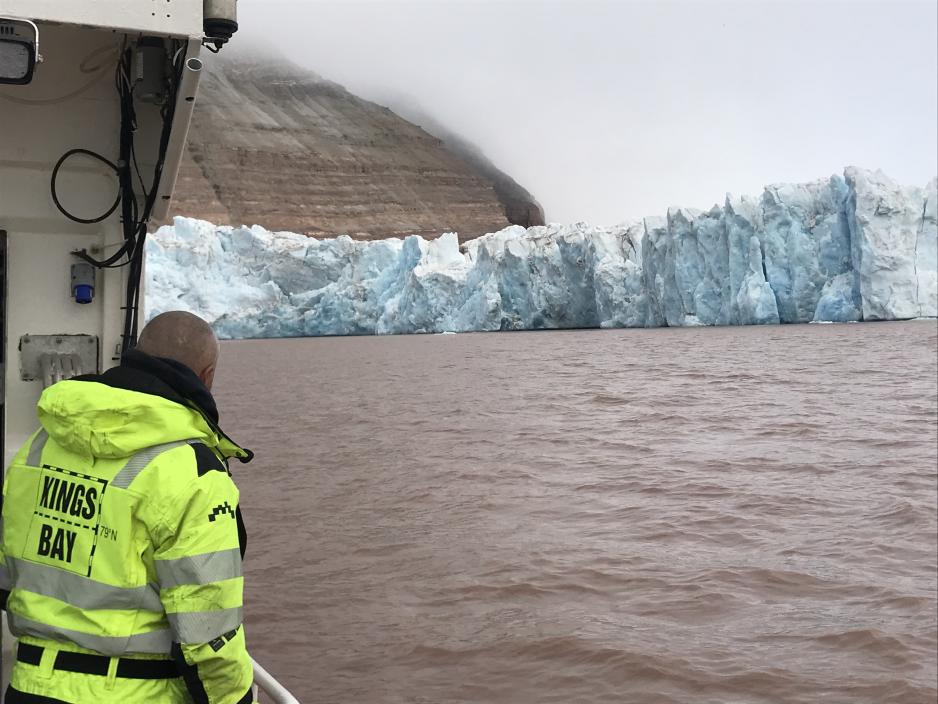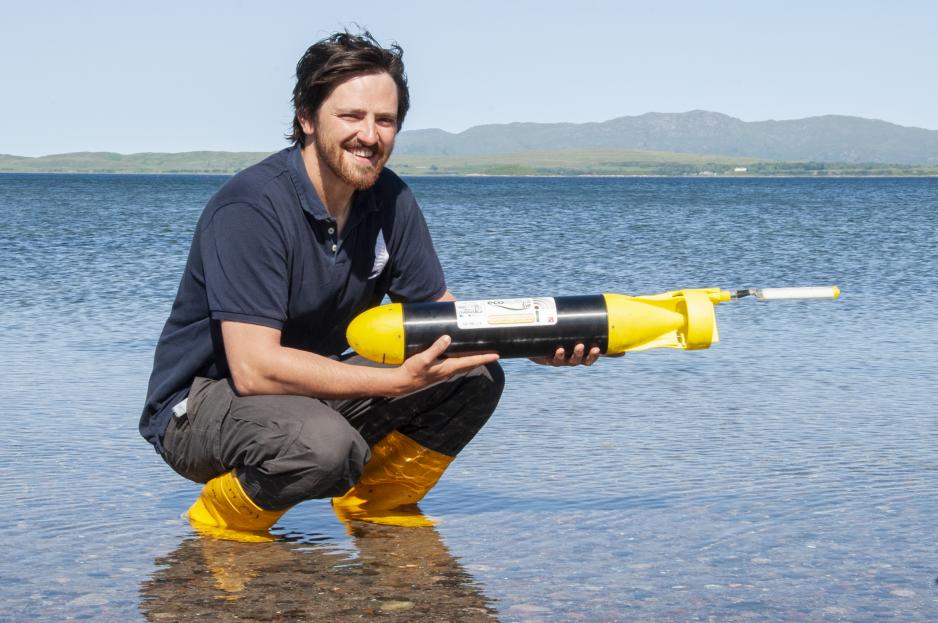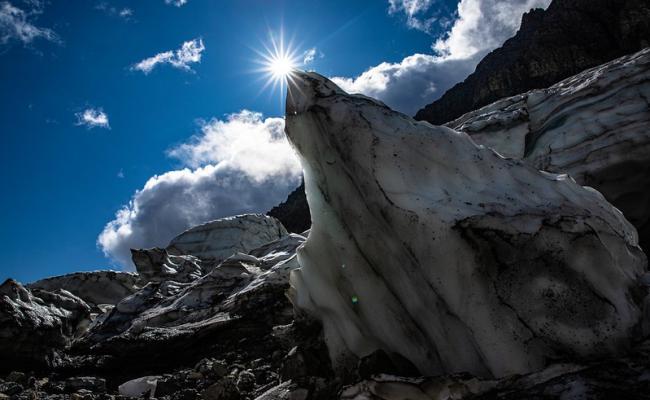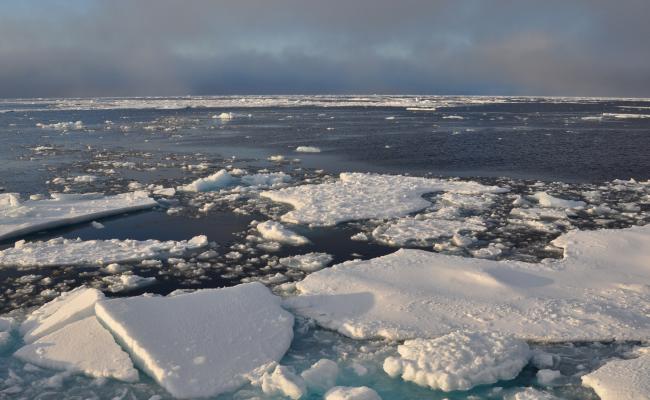Using Robots to Investigate Ice Melting in Svalbard

At the front of the Kronebreen glacier in Kongsfjorden near Ny-Ålesund in Svalbard. (Photo: Fjordic Freshwater Fluxes)
Robots operating both on the sea surface as well as under water are to provide scientists with answers as to how glaciers in Svalbard are melting. A new science mission set out from Ny-Ålesund last Friday.
The mission is part of the Fjordic Freshwater Fluxes (FFF) project and its goal is to find out how fast glaciers are melting and how freshwater from the glaciers changes the sea.
The mission is a collaboration between the Scottish Association for Marine Science (SAMS), UiT Norway’s Arctic University, the Norwegian Polar Institute and the University Center in Svalbard (UNIS).
The team of scientists is to investigate the Kronebreen glacier in Kongsfjorden near Ny-Ålesund, which is the world’s northernmost settlement, and measure how much the glacier melts and how the freshwater affects the saltwater entering the fjord from the North Atlantic ocean.

PhD Student James Coogan is to control the ecoSUB during the mission. (Photo: SAMS)
Need more knowledge
“The fjords are the connection between the shifting ocean and our fast-melting northern glaciers. It is thus extremely important to understand what happens when it comes to the transferring of heat and water on these points in order to understand how climate changes affects our ocean”, says Professor Finlo Cottier from SAMS and UiT in a UiT press release.
These areas are too dangerous to map fully and to small to be picked up on global ocean models. Hence, the interplay between fjords and glaciers has not been sufficiently represented in ocean and climate predictions, according to Cottier:
“We need to know much more about the freshwater running into the ocean. How much is there? Where does it end? How does it move?”
Giant calving causes giant waves, so it is a dangerous place.
Too dangerous
The risk of the glaciers’ calving makes it dangerous to stay near the glaciers. Therefore, the team uses an autonomous surface vessel to conduct ocean measurings on the glacier. A self-propelled subwater vessel – an ecoSUB – is to measure temperature, saltiness and oxygen beneath the surface.
At the same time, aerial drones are to explore the freshwater running through the melt water channels on the glacier.
“It would simply be too dangerous to enter these areas with a vessel. Not only is there a risk of ice falling down, but major ice calving causes giant waves, so it is a dangerous place. That is where robot systems are ideal and work at the front line of Arctic science”, Cottier says.
Ice melting
While increasing global temperatures lead to more ice melting, glaciers also break up underneath the surface, and freshwater pours into the ocean through the glacier.
This water, which is fresher than the surrounding sea water, starts ascending in the water column and create a channel that draws in warmer Atlantic Ocean water. This, in tur, leads melting speed at the glacier to increase, the ice wall is undermined, and big parts of the glacier collapse into the sea.
The marine robot used by the team will gather important data to have a better understanding of this process. The mission is to last for seven days. The team is based in Ny-Ålesund and visits the Kronebreen glacier on a daily basis.
Also read
This article was originally published in Norwegian and has been translated by HNN's Elisabeth Bergquist.



